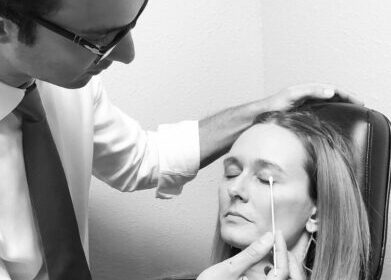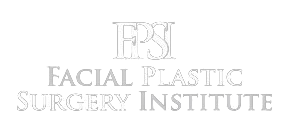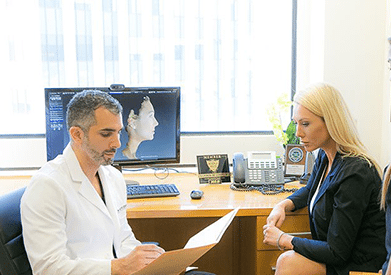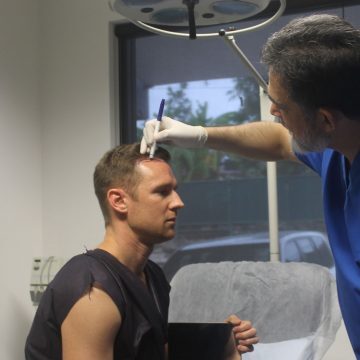Over the past few decades, the plastic surgery industry has grown tremendously—not just in terms of advancements and cutting-edge technology but in how we think about and approach patient care.
The global plastic surgery market has surged to a total value of USD 69.7 billion in 2023.
And it’s anticipated that the industry will expand at a CAGR (compound annual growth rate) of 11.1% to reach an estimated USD 158.7 billion by 2031.
Today, it’s about much more than physical change. It’s about confidence, empowerment, and improving patients’ quality of life.
So, what’s driving this evolution? A few things stand out.
First, better data and greater accessibility have completely changed the game.
Surgeons now have deeper insights that help guide more personalized, informed decisions for each patient.
At the same time, patients are doing more homework than ever before, often walking into consultations with a clear idea of what they want and what’s possible.
Social media has also played a huge role in this shift. Platforms like Instagram, TikTok, and YouTube have opened up conversations about procedures that used to be tucked away behind closed doors.
Real patient stories, before and after transformations, and day-in-the-life content from surgeons are helping people feel more seen, more curious, and more confident in exploring their options.
If you’re a seasoned, board-certified practitioner, you’ve likely noticed this change.
The conversations you’re having with patients are evolving, and so are their expectations.
That’s why staying up to date with the latest trends and data isn’t just helpful—it’s essential.
In this article, we’ll take a closer look at the current state of the plastic surgery industry in the US, using the most recent authoritative data.
We’ll also break down key trends and explore how social media is influencing not just patient decisions but how you might approach your own digital marketing strategy.
Our goal is simple: to give you and other plastic surgeons practical insights you can use, whether you’re refining your practice or simply trying to understand better how today’s environment is shaping tomorrow’s opportunities.
Plastic Surgery Trends and Digital Influence
In its latest data release, the American Society of Plastic Surgeons (ASPS) said that plastic and cosmetic procedures have become more important than ever in the United States.
The 2023 ASPS Procedural Statistics report highlighted that patients are shifting priorities in a post-pandemic landscape. The report showed steady growth of demand across multiple categories.
The number of cosmetic surgeries increased by 5% year-over-year in 2023. The ASPS said that this reflected a consistent commitment to aesthetic enhancement despite economic uncertainties.
The full report also indicated a 7% growth rate in the frequency of minimally invasive procedures.
The ASPS said that this was a result of more patients prioritizing their appearance while considering less expensive alternatives and faster recovery times.
The ASPS suggested that social media might be one of the crucial motivators of this accelerated demand, especially since platforms like Facebook, Instagram, and TikTok have become vital in promoting plastic surgery services and highlighting before and after transformations.
What Are the Most Popular Plastic Surgery Procedures Today?
The ASPS said that overall interest in plastic and cosmetic procedures remained strong when compared to pre-COVID trends despite some deceleration in demand.
- Reconstructive Surgery
In 2023, the most significant annual increases in reconstructive plastic surgery procedures were seen in pelvic floor reconstruction (7%), followed by reconstructive breast implant removal and breast reconstruction (both at 4%).
The greatest number of procedures in the reconstructive plastic surgery category was reported in tumor removal (including skin cancer), accounting for 351,591 procedures.
This was followed by hand surgery (207,887) and breast reconstruction (157,740).
- Facial and Neck
Facial and neck procedures remained some of the most popular choices for aesthetic surgery in 2023.
In particular, blepharoplasty (eyelid surgery) went up by 5%. The ASPS said that this increase stemmed from a greater preference for safer procedures that can be performed under local anesthesia.
Rhinoplasty procedures increased by 6%, spurred by a growing demand for ethnic rhinoplasty. This nose-reshaping procedure helps individuals refine their features without altering their cultural identity.
Facelifts saw an 8% upswing, which might’ve been influenced by the use of semaglutide medications for weight loss.
Chin liposuction also went up by 6%, a trend that might’ve been influenced by the overuse of hyaluronic acid fillers. The ASPS said that patients may now be gravitating towards alternative solutions for facial contouring due to these concerns.
- Chest and Core
Interest in body contouring procedures remained high, particularly among patients who want to refine specific body areas that are not responding to diet and exercise.
The ASPS found liposuction to be the most-performed plastic surgery procedure in 2023, with a 7% annual increase to 347,782 procedures. Tummy tucks also reported a 5% rise, with a total number of 170,110 procedures.
Breast enhancement procedures remained a mainstay of aesthetic surgery, with breast augmentations accounting for 304,181 procedures. This volume included both primary and revision surgeries.
Breast lifts posted a 7% year-over-year increase, with 153,600 procedures performed. Implant removals and replacements also grew by 9% as more patients now seem to prefer more natural breast contours.
- Lower Body and Extremities
Many patients go for body lifts to address loose skin, particularly in areas such as the abdomen, thighs, waist, and buttocks.
Surgical interventions for skin tightening saw increased popularity, mainly driven by individuals who saw their weight significantly drop as pandemic-era mobility restrictions ended.
Upper arm lifts increased by 8% as more patients attempted to address excess skin that is often resistant to exercise. Lower body lift procedures went up by 5%, while buttock lifts saw a 6% increase.
And while thigh lifts remained relatively stable with a 2% rise, the ASPS said that the overall trend in lower body and extremity surgery indicated a greater interest in achieving a balanced and toned appearance through surgical enhancement.
The Rise of Nonsurgical and Minimally Invasive Procedures
The ASPS reported that minimally invasive treatments continued their upward trajectory, mainly due to technological advancements and patient preferences for lower-risk procedures.
Neuromodulator injections like BOTOX® remained a primary choice for facial rejuvenation. In 2023, botulinum toxin type A procedures (including BOTOX®, Dysport®, and Xeomin®) reached nearly 4.72 million, representing a 6% annual growth.
Dermal filler treatments also saw increased use, with a 4% increase to reach approximately 3.441 million procedures.
The ASPS said that this was a result of a growing number of people understanding the appeal of nonsurgical interventions, which offer noticeable results without the significant disruption and downtime involved in traditional surgery.
Reconstructive Surgery and Patient Demand
The number of reconstructive procedures across the US went up by 2% annually to reach approximately 1.025 million procedures in 2023.
The ASPS said that this increase reflected an ongoing demand for medical interventions that restore both function and appearance to improve patients’ quality of life.
Here are some of the most popular reconstructive procedures performed in the US in 2023:
- Breast Reconstruction
Amid a greater interest in restoring the form and appearance of breasts following mastectomies, breast reconstruction saw 4% annual growth for a total of 157,740 procedures.
The procedure can improve patients’ self-confidence and body image, which the ASPS said can help them heal faster after surgery or cancer treatment.
- Hand Surgery
In 2023, the number of hand surgery procedures went up by 2% for a total of 207,887 treatments.
The ASPS attributed this increase to a growing need for improving mobility, relieving pain, and restoring function in patients’ hands.
- Maxillofacial Surgery
The number of maxillofacial surgeries—which can repair damage caused by disease, trauma, or congenital conditions—increased by 1% to 52,868 procedures in 2023.
Aside from aesthetic improvements, this procedure can facilitate critical life functions such as speaking, chewing, swallowing, and breathing.
- Scar Revision
This procedure saw a 2% annual increase to roughly 52,000 procedures in 2023, focusing on minimizing scar visibility, improving physical mobility, and relieving discomfort stemming from scar tissue.
- Tumor Removal
A total of 351,591 tumor removal procedures were performed in the US in 2023 (up by 2%), making this the most popular reconstructive procedure in the country.
According to the ASPS, tumor removal addresses immediate health concerns and improves long-term outcomes alike. The treatment can also enhance the patient’s overall quality of life by reducing the likelihood of tumor recurrence.
Regional Plastic Surgery Trends and Market Insights
The ASPS reported significant differences in patient preferences across regions:
- New England and Middle Atlantic
New Englanders and Middle Atlantic residents underwent a total of 22,862 breast reconstruction procedures (14% of the region’s reconstructive plastic surgery procedures) and 2,342 reconstructive breast implant removals (9%) in 2023.
This region also accounted for 11% of total cosmetic procedures performed across the country that year, with butt lifts (27%) and chin liposuction and rhinoplasty (both at 17%) accounting for the bulk of invasive procedures.
When it comes to minimally invasive procedures, noninvasive fat reduction and hyaluronic acid fillers were the most common, each representing 17% and 16% of the national total, respectively.
- North Central
This region saw 31,276 breast reconstruction procedures (20% of the regional total for reconstructive plastic surgeries) and 4,005 reconstructive breast implant removals (16%).
This region also reported around 220,700 cosmetic procedures in 2023, representing 14% of the national total.
Chin augmentations were the most frequent invasive procedure (33%), followed by male breast reductions (19%).
For minimally invasive procedures, spider vein treatments accounted for 33% of the region’s total, followed by nonhyaluronic acid fillers at 19%.
- South Atlantic
A total of 37,220 breast reconstruction procedures (24% of the region’s reconstructive plastic surgeries) and 7,115 reconstructive breast implant removals (28%) took place in this region in 2023.
This region also had 426,300 cosmetic procedures during the same period, accounting for 28% of all cosmetic treatments in the US.
The region reported a strong preference for Brazilian butt lifts, which made up 50% of the total invasive procedures, followed by liposuction at 35%.
Among minimally invasive treatments, neuromodulation injections, such as BOTOX®, were the most popular (30%), followed by lip augmentations with injectables at 28%.
- South Central
South Central residents went for 20,571 breast reconstructions (13% of the region’s total reconstructive plastic surgeries) and 4,653 reconstructive breast implant removals (18%) in 2023.
With 281,800 procedures performed, this region accounted for 18% of all cosmetic procedures in the US. Butt implants led the invasive procedures category (43% of the national total), followed by butt lifts (32%).
Popular minimally invasive procedures included skin resurfacing treatments (23%) and spider vein treatments (21%).
- Mountain and Pacific
This region reported the greatest number of breast reconstruction procedures in the US, totaling 45,811 procedures in 2023. This accounted for 29% of the region’s overall number of reconstructive plastic surgeries.
Approximately 7,106 reconstructive breast implant removals took place in the Mountain and Pacific regions during the same period.
The region also represented the largest volume of cosmetic procedures in the country, with 449,300 performed (29% of the national total).
Cheek implants made up 73% of the total invasive procedures in these regions, while buccal fat pad removals followed closely at 54%.
Noninvasive skin tightening (44%) and skin treatments (40%) were the most common procedures in the minimally invasive category.
Global Plastic Surgery Trends and Market Insights
In a report covering 2023 (the latest one available), the International Society of Aesthetic Plastic Surgery (ISAPS) said that the number of aesthetic or cosmetic surgeries worldwide increased by 5.5% annually to reach 15.8 million surgical procedures.
The ISAPS Global Survey on Aesthetic/Cosmetic Procedures also reported 19.1 million nonsurgical procedures worldwide during the same year-over-year period, bringing the overall increase in procedures to 40% over the last four years.
In 2023, liposuction was the most common surgical procedure worldwide, with over 2.2 million procedures performed. It was followed by breast augmentation, eyelid surgery, abdominoplasty, and rhinoplasty.
The ISAPS said that face and head procedures saw significant growth in demand, with a 19.6% annual increase to reach over 6.5 million total procedures worldwide.
Nonsurgical aesthetic procedures also enjoyed strong popularity, with botulinum toxin, hyaluronic acid, hair removal, nonsurgical skin tightening, and nonsurgical fat reduction leading the list.
Botulinum toxin continued to be the most popular nonsurgical procedure globally, with 8.8 million procedures performed. Meanwhile, hyaluronic acid injections increased by 29% to reach 5.5 million procedures.
Demographics: Who’s Getting Plastic Surgery Today?
The ISAPS report found that women still accounted for the majority of aesthetic procedures worldwide, making up 85.5% of the 2023 total.
However, the number of plastic surgeries involving men, particularly face and head procedures (up by 18% annually), is also on the rise.
Among women, liposuction replaced breast augmentation as the most common surgical procedure, with a 29% increase from 2021 for a total of 1.8 million procedures.
Among men, eyelid surgery became the most popular surgical option, surpassing liposuction.
The ISAPS also reported that age groups played a role in procedure preferences. Most breast augmentations (53.7%) and rhinoplasties (65.8%) were performed on patients aged 18 to 34.
Meanwhile, botulinum toxin procedures were most frequent among individuals aged 35 to 50, representing 49% of all procedures in this category.
How Social Media and Online Reputation Affect Plastic Surgery Trends
Over the past few years, social media providers like Meta (Facebook and Instagram) and TikTok have become essential in promoting plastic surgery services and displaying transformations.
The visual nature of these platforms—especially with the burgeoning popularity of before and after photos—has influenced how plastic surgery practices market themselves and interact with their patient base.
This development emphasizes the central role of a strong social media presence in marketing. However, cultivating this presence requires significant effort.
Aside from before and after pictures, the ASPS suggested regular high-value posts to maintain patient engagement and make a surgical practice more distinct in an increasingly competitive market.
On the consumer side, social media has affected how people see themselves.
The advent of selfies and the prevalence of Zoom calls have made individuals more sensitive about how they look.
The ASPS warned that unhealthy levels of self-scrutiny may drive people to focus on perceived imperfections.
The prevalence of image editing and filtering in social media, which often highlights idealized beauty standards, has also led to unrealistic patient expectations.
Additionally, social media trends can influence the popularity of certain kinds of procedures.
People might seek specific treatments or surgeries based on online trends without fully understanding the risks, limitations, or suitability of those procedures.
The ASPS said that the rising interest in plastic surgery has been mainly impelled by these shifts in how individuals view themselves. Thus, maximizing social media can significantly contribute to your practice’s success.
Digital Spotlight’s expertise in social media channels can help emphasize your expertise and reach potential patients more directly.
Even if these platforms do not directly affect your search engine optimization, social media engagement can still boost your practice’s online visibility.
We’ll identify your most popular and successful key terms by taking note of your social media posts that receive more engagement. This will help us align our strategy closer to your potential patients’ interests.
Plastic Surgery Perceptions Among Medical Students and Future Surgeons
A survey published in the JPRAS Open Journal found that many medical students who are looking to build their careers in plastic surgery said that teaching staff significantly influenced their perception of plastic surgery.
Specialized workshops and courses were considered especially valuable for students who are looking for insights into the plastic surgery field.
These events give students unique opportunities to learn about the latest advancements in surgical techniques and technology.
Another survey published in the peer-reviewed journal Clinical, Cosmetic and Investigational Dermatology found that a growing number of college-age individuals are considering cosmetic surgery treatments.
In fact, between 1.3% and 6.4% of this group have already undergone cosmetic surgery, while 21% to 43% were found to be interested in undergoing cosmetic surgery procedures sometime in the future.
How Younger Generations View Plastic Surgery and Social Influence
Young adults are increasingly interested in plastic and cosmetic procedures due to various factors, such as the following:
- Concerns about attractiveness and self-worth
- Media portrayals of “perfect” bodies
- Positive opinions of celebrities and their influence on beauty standards
These factors highlight the perceived link between body satisfaction and the desire for aesthetic treatments among young adults.
After all, people who are less satisfied with their appearance might be more likely to seek out plastic and cosmetic procedures.
The Evolution of Plastic Surgery and Technological Advancements
Innovations in plastic and cosmetic surgery over the past few decades have made surgeries more accessible, effective, and precise.
Among these crucial advancements is the integration of artificial intelligence (AI) into surgical practices.
AI tools can learn over time to assist in surgical planning and decision-making by running simulations and processing substantial datasets like patient information and surgical environments.
The ASPS noted that with proper oversight, AI can enhance surgeons’ ability to achieve more accurate results, leading to improved patient outcomes.
Virtual reality (VR) and augmented reality (AR) are also becoming critical in modern surgery.
AR displays can help surgeons see real-time digital information regarding patients’ body parts during surgery, while VR simulations give valuable opportunities for practicing procedures in a risk-free environment.
Laser technologies are valuable in skin tightening and other procedures.
These lasers are used to treat wrinkles and scars by burning off specific skin layers to stimulate collagen production, ensuring minimal recovery time.
Plastic Surgery Statistics: Insights for Surgeons
The ASPS noted that as plastic surgery continues to evolve, patients become more aware of their options, incorporating both surgical and noninvasive treatments.
While demand has stabilized compared to the post-pandemic surge, the plastic surgery industry’s strength reflects consumers’ ongoing commitment to aesthetic enhancement.
The ASPS said that the popularity of facial refinement, body contouring, and minimally invasive techniques cements the need for personalized solutions that meet patients’ aesthetic goals and economic considerations while taking advantage of emerging medical advancements.
About Digital Spotlight
We’re a digital marketing agency committed to helping plastic surgeons like you attract more patients while maximizing your marketing dollars.
We combine our expertise of over 15 years in digital marketing and a firm grasp of what really works for healthcare practices—and we’ll leverage these resources to set your plastic surgery practice up for lasting success.
Our lead-focused strategies don’t stop at getting your name out there.
We’re here to drive new patient inquiries and referrals, scheduled consultations, and booked procedures so you can focus on what you do best: delivering exceptional aesthetic services.
We focus on developing catchy marketing material like websites and content, incorporating crucial keywords like “ear surgery,” “chemical peel,” or “breast implant removal” so your practice stands out.
We’ve secured first-page Google rankings for 1,812 international businesses across 355 niches, and we’re ready to do the same for your practice.
With our extensive library of knowledge and experience, we can help your plastic surgery practice stand out from the competition and achieve the best return on investment.
Contact us today if you have questions about growing your plastic surgery practice through digital marketing.
Call us at 310 879 8003 or email us at contact@digitalspotlight.com to book your obligation-free, pitch-free consultation. We’ll be happy to discuss how we can fuel your further business growth.

